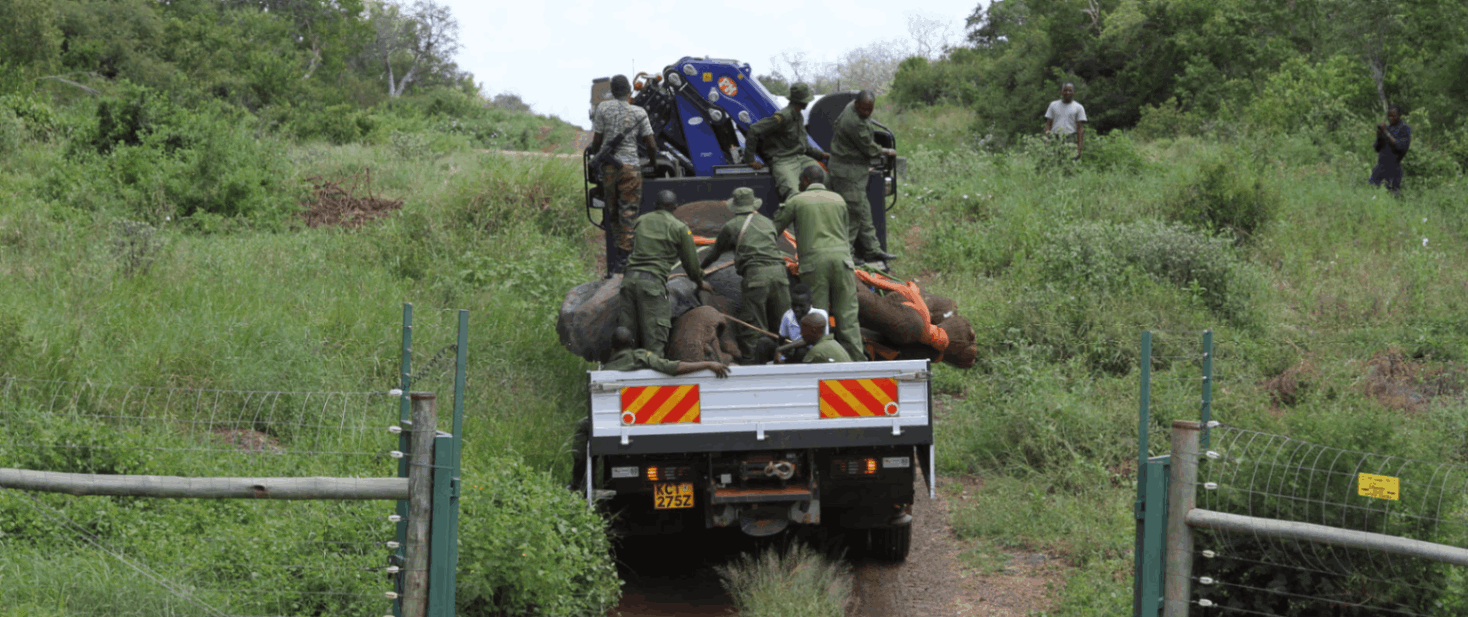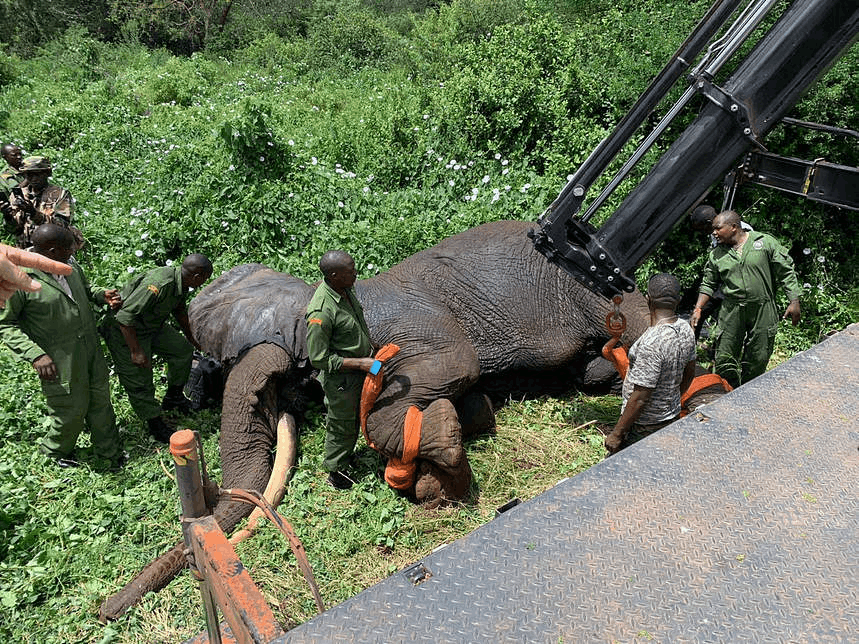Our expanding communities are gradually encroaching upon the natural habitats of wildlife, leaving less and less room for these creatures to thrive.
This encroachment poses a significant challenge for elephants, whose traditional pathways have been traversed for thousands of years.
Watch the video at the end.
This situation can lead to dangerous encounters between humans and elephants without prompt intervention, endangering both.

This is where elephant translocation emerges as a critical tool in safeguarding these magnificent animals and securing their continued existence.
On the 24th of February, the Sheldrick Wildlife Trust (SWT) received a concerning report about a male elephant that had ventured into a community land in Kibwezi.

With human settlements in the vicinity, an urgent need arose to relocate the elephant to a safer environment, mitigating potential conflicts and harm.
Recent times have witnessed rising human-wildlife clashes, prompting the SWT to invest in multiple strategies to mitigate these issues.
These efforts include the erection of protective fences, community education, the use of helicopters, and the procuring a specialized elephant translocation vehicle equipped with a crane.

However, deploying a helicopter to guide it back to a protected area was not feasible in the case of the elephant’s presence within the community.
Instead, the Trust employed its new translocation vehicle, with support from the SWT/KWS Tsavo Veterinary Unit, SWT helicopter, and ground teams, to initiate the operation for relocating the elephant.
Under the guidance of Dr. Poghon, a vet from the Kenya Wildlife Service (KWS), the elephant was safely darted from a helicopter.

Subsequently, the team employed specially designed padded straps to secure the tranquilized elephant’s legs before carefully hoisting it onto a truck using a crane.
The elephant was then transported to the Kibwezi Forest, where the Sheldrick Wildlife Trust (SWT) and the Kenya Forest Service ensured its protection.
The SWT went the extra mile by erecting a 93-kilometer electric fence along the Tsavo West/Chyulu/Kibwezi boundary, along with an additional 45-kilometer border alongside the KARI ranch, serving the dual purpose of wildlife protection and the distinction between animals and human communities.

This elephant’s translocation was a critical step in ensuring its safety.
Now, with the majestic bull out of harm’s way, it can roam freely within the extensive protected area it has been relocated to.
This positive outcome benefits wildlife and human communities, allowing them to resume normal activities.

Witness the moment as the bull stands up and disappears into the wilderness, where it rightfully belongs.





